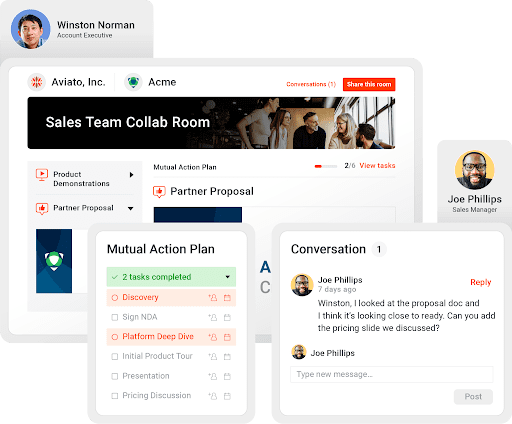Are You Outgrowing Your Enablement Platform? 4 Signs It’s Time to Switch
![]() Christian Pieper
on
December 12, 2024
Christian Pieper
on
December 12, 2024
It would be awesome if every enablement professional could solve all their problems by simply choosing the perfect vendor, but sadly, no revenue enablement platform comes with a magic wand.
Sales enablement success hinges on building a partnership between your company and your vendor–a partnership that meets you where you are at, supports your needs, and grows alongside you as your enablement needs mature.
Whether you are using Seismic, HIghspot, or Allego, alternatives are out there. Even if your revenue enablement platform met your needs when you chose it, how have your needs changed since? Are there steps you would like to take to take your enablement to the next level? It might be time to explore other sales enablement platforms.
Here are four signs that you’ve outgrown your current revenue enablement solution.
1. You’re chasing adoption/completion long after implementation.
Adoption is important, but it’s not an end unto itself. You want the adoption and consumption of your training content because you want your reps to improve their selling behavior and win more and bigger deals.
Less mature solutions like learning management solutions (LMS – a fitting acronym in this case), point solutions, and less robust platforms are designed to drive consumption and report on it. If you want to prove your impact on the numbers that matter, you need a comprehensive revenue enablement solution like Mindtickle.
2. You’re shopping for point solutions to fill gaps.
When your needs outgrow your revenue enablement vendor, one common strategy is to augment your base platform with point solutions to serve unmet use cases. If you’ve considered adding new tech to provide AI role-plays, personalized learning, or partner enablement, it’s worth asking why your current platform doesn’t offer those solutions.
Adding point solutions might expand your use cases, but it will also complicate your seller experience, create data siloes, and add to your admin burden. In contrast, upgrading to a robust revenue enablement platform like Mindtickle, will simplify your tech stack while serving your present and future growth needs.
3. You’re doing the same manual steps over and over.
Simple enablement solutions are great if you’re looking to serve basic use cases for a small team. Even then, you’ll compensate for the platform’s limited functionality with more repetitive, time-consuming, manual work from your enablement team. You can get by that way for a while, but as your needs grow, those small inconveniences become major drains on your resources and ROI.
When your admins complain about an extra click or manual step or two, they complain about hundreds or thousands of extra steps over a few months. Consider how much more agile, effective, and comprehensive your enablement initiatives could be without this massive drain on your output. Considering the initial use cases, a better platform could be enabled with its focus on automation, artificial intelligence, and other critical time savers.
4. You’re struggling to keep up with change.
As companies grow, so does the rate of change they confront. New acquisitions, competitors, products, etc.–all of these advancements pose unique challenges to enablement teams. How do you keep your reps up-to-date with everything that happens? How do you keep them ready for every interaction, every day?
Simple, old-fashioned enablement platforms make it harder for you to adapt to change. If you can’t easily find, update, and maintain content, your enablement programs are growing out-of-date before you even get them fully adopted. Modern revenue enablement platforms should provide you with lots of different learning modalities for getting answers in the hands of your reps right when they need them. And they’ll provide you with AI assistants, templates, and pre-built content that help you get up-to-date information in your reps’ hands significantly faster.
Seamlessly upgrade your sales enablement strategy
If any of these sound like you, don’t worry. It’s a good sign. Your enablement function is ready to take the next step to unlock a higher return on a new investment. You just need the right sales enablement tools in your toolbelt.
Worried about the challenges and costs of migration? Don’t let that hold you back. As Seismic, Highspot, and Allego competitors, we at Mindtickle hear this all the time, and we’ve helped dozens of companies make the switch to a more robust revenue enablement platform to match their evolving needs.
Our expert support and services professionals make it as simple as possible for you to migrate your valuable content, while quickly unlocking the new value supported by Mindtickle’s advanced revenue enablement technology. Before you know it, you’ll be giving your growing team the support they need, while enjoying the support from a true partnership with a mature revenue enablement vendor.
Take the Next Step in Sales Enablement
Upgrade to Mindtickle and unlock the full potential of your revenue team.
Request Your Demo





























